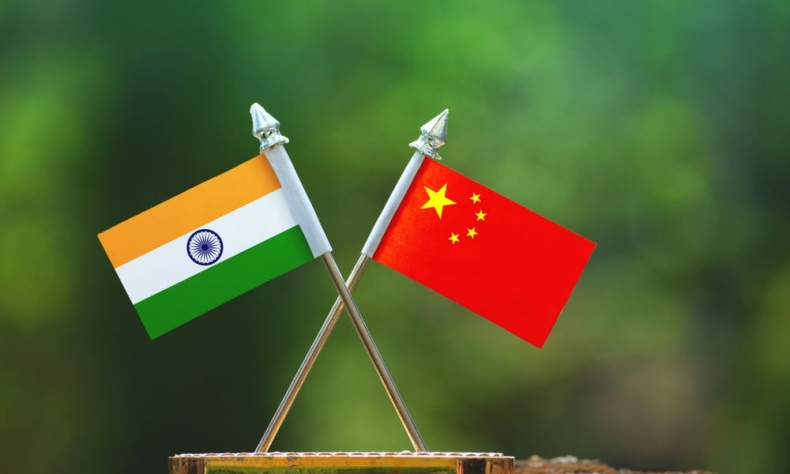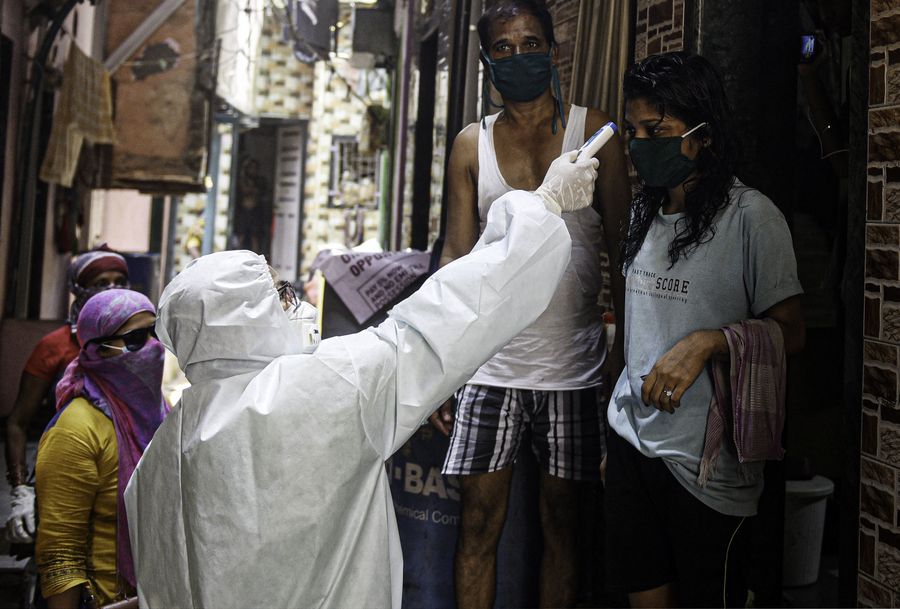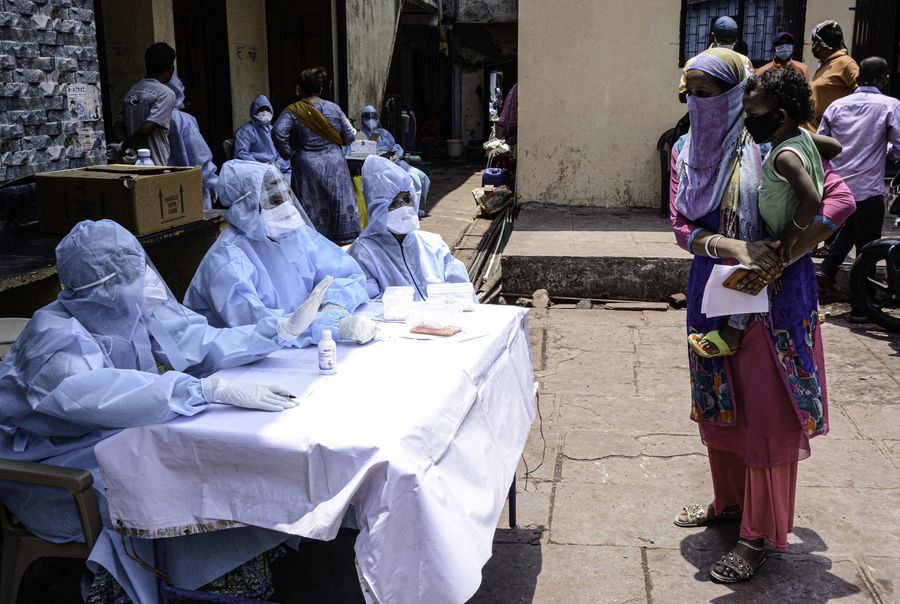Mutual Trust Is Key to Shaping the Next Chapter in China-India Relations

By enhancing mutual trust, focusing on cooperation, managing differences and seeking common development, China and India could chart a new course for the dragon and elephant in the future.
Management of crises. Meetings of top leaders. Upturn in relations. These three phrases have characterized China-India relations in recent years. This year marks the 70th anniversary of diplomatic ties between the two countries. As President Xi Jinping said in a congratulatory letter to his Indian counterpart Ram Nath Kovind, China-India relations have made a remarkable journey in the last seven decades. They have established a strategic and cooperative partnership for peace and prosperity and are working to build a closer developmental partnership, with deeper exchanges and cooperation across the board and growing coordination on major international and regional affairs.
Sino-Indian relations stand at a new juncture today. As the second and fifth largest economies in the world, they have become important engines of regional and global economic growth. Their combined economic output accounts for half of Asian and one fifth of the global total. At the same time, the increase in their comprehensive strength has made them more influential actors on the regional and world stage, which means Sino-Indian ties have gone beyond the bilateral domain and become increasingly global.
Looking back
In the recent period, the two countries have maintained a healthy and stable relationship. The rapid growth in trade, investment and cultural engagements has enhanced their partnership. They have also coordinated and cooperated on major international issues, including the global financial crisis and climate change.
Hailing the increasingly mature bilateral ties, Indian External Affairs Minister S. Jaishankar said in a recent letter to Chinese State Councilor and Foreign Minister Wang Yi that India-China relations “have expanded substantially and become increasingly diverse and multifaceted.”
Individuals in their 70s usually become calm, restrained and reasonable in their actions. As Chinese sage Confucius put it, one never breaks any established rules to do as one pleases in his 70s. Similarly, after 70 years, the China-India relationship should step into a new phase of maturity and sustainable development.
It is important to maintain good-neighborliness, friendship, unity and cooperation in pushing the relationship forward. The bilateral interaction has entered a new stage of development after the informal meetings between Xi and Indian Prime Minister Narendra Modi in China’s Wuhan in April 2018 and in India’s Chennai in October 2019. The leaders reviewed the bilateral ties and charted the course of long-term development from a strategic and practical perspective.
After these meetings, the two countries have built more consensus on the nature of bilateral ties. They agreed to focus on cooperation by seeking and expanding common ground while shelving differences and maintaining the strategic orientation of not regarding each other as enemy. By doing so, they aim to ensure their relationship move forward in a healthy and stable manner.
Going forward, the two countries should enhance strategic mutual trust. China and India are not only the two largest developing countries and emerging economies, but also important neighbors. They must recognize that a healthy and stable relationship serves the fundamental interests of the two peoples and it is also in line with the expectations of regional countries and the international community. A basic acknowledgment that both present opportunities for each other’s development and do not pose a threat to each other should be formed and upheld.
Peaceful coexistence and cooperation for mutual benefit is the only right choice for the two countries. They need to have firm resolve to strengthen mutual trust, which is essential to elevate friendly exchanges to a new level.

Pragmatic cooperation
There is still room for China and India to expand cooperation in trade, investment, culture and other areas to consolidate their strategic and cooperative partnership.
Both are at a crucial period of developing their economy, deepening reform and advancing modernization. Their economic interdependence means cooperation could inject strong impetus into each other’s growth. The bilateral trade volume has grown from less than $10 million to today’s nearly $100 billion. China is the largest trading partner of India and India is the largest trading partner of China in South Asia.
Moreover, there is a large potential of cooperation in numerous fields including pharmaceutics, information technology, infrastructure connectivity, environmental protection, poverty alleviation and governance experience sharing. There are about 1,000 Chinese enterprises operating in India now, with accumulated investment of $8 billion. Many Indian companies are also exploring the Chinese market, investing nearly $1 billion. The two countries have established nearly 40 dialogue mechanisms to discuss bilateral, regional and global issues.
During their meeting in Chennai, Xi and Modi agreed to set up a bilateral high-level economic and trade dialogue mechanism to enhance strategic synergy in economic development, explore the creation of manufacturing partnerships, promote trade balance and sustainable growth, and encourage private investment. In people-to-people exchanges, the two countries have established 14 pairs of twin cities and provinces. Cultural exchanges have served as important means to foster mutual understanding and consolidate friendship, and have also become a new stimulus in Sino-Indian ties.
Sensitive issues including territorial disputes should be handled cautiously to prevent them from thwarting or even hijacking bilateral ties. Besides historical issues, other factors such as the global geopolitical landscape also pose challenges to the ties. Therefore, the two countries must expand coordination and dialogue and bring the negative factors under control to lift the relationship from the cycle of ups and downs. China and India should make good use of the current crisis management mechanism and seek a solution to the border issue to remove this thorn in their relationship.
The two sides should establish an extensive interactive network. For example, the military and strategic research communities need to maintain regular communication to reduce strategic miscalculations and enhance strategic mutual trust. The academic circles, media outlets, non-governmental organizations and research institutions should also enhance exchanges to bridge the gap between the two peoples and eradicate misunderstandings.
As Modi said, India and China are “two bodies, one spirit.” The two countries will embark on faster development and play a bigger role in regional and world affairs if they can conduct in-depth strategic communication, remove strategic doubts in a timely manner, and effectively manage border and other difficult issues.

Global coordination
Currently the world is undergoing unprecedented changes as the multilateral system established after World War II has been under attack. In the past decade, the world economy experienced lingering recession as the international society failed to tackle prominent structural problems.
Meanwhile, multilateral mechanisms such as the Group of 20 (G20), the World Trade Organization and even the UN have become somewhat powerless in pushing forward global governance. Western countries, who built and have dominated these mechanisms for decades, show a tendency to use them when they suit their purpose and undermine them otherwise.
China and India are both developing countries with large populations, economies and huge potential. In the face of surging unilateralism, protectionism and global turbulence, they should enhance coordination as they have increasing common interest in promoting globalization, and hold similar positions on major regional and international issues.
It is also the shared aspiration of the two countries to draw on Oriental wisdom to guide global governance out of the current disorder. For instance, during their Chennai meeting, Xi and Modi agreed to strengthen coordination within the framework of the G20, BRICS, the Shanghai Cooperation Organization and other multilateral mechanisms to create smoother regional interconnectivity. They also reached consensus on maintaining the international order with the UN at the core and based on international law. They committed to preserving multilateralism and the multilateral trading system, jointly addressing global challenges, promoting multi-polarization and economic globalization, and safeguarding the common interests of developing countries. By doing so, China and India can inject certainty and impetus into the international community.
China and India, each with a population of more than 1 billion, both shoulder the historical mission of economic development, improving people’s livelihood and national rejuvenation. They play a key role in the rise of developing countries. As Xi put it, “If we [China and India]speak with one voice, the whole world will listen, and if we join hands, the whole world will pay attention.”
By enhancing mutual trust, focusing on cooperation, managing differences and seeking common development, China and India could chart a new course for the dragon and elephant in the future.
The author is deputy director of the Department for Asia-Pacific Studies at the China Institute of International Studies.
 Facebook
Facebook
 Twitter
Twitter
 Linkedin
Linkedin
 Google +
Google +










